Abstract
Despite being cultivated in China for millennia, the Chinese jujube is mostly unknown to Western consumers. The fruits are borne from vigorous trees that are tolerant to drought, disease, and other stresses. A number of cultivars have been demonstrated to produce well in Florida. This publication is a review of jujube genetics and management as this crop gains favor among small farms and homeowners.
Introduction
The Chinese jujube (Rhamnaceae; Ziziphus jujuba Mill.) (Figure 1) is a deciduous fruit-bearing tree that is among the oldest domesticated tree crops, with evidence of cultivation going back over 7000 years. While relatively unknown to most in the West, the jujube is a popular and nutritious fruit estimated to be enjoyed by over a billion people on a regular basis. In China, it is among the most popular fruits, consumed both fresh and dried (described as the “Chinese date”), and had a market value of over $14 billion in 2017. Despite its limited cultivation in the United States, some cultivars of Chinese jujube have been shown to be well-adapted for production in Florida. Their rapid growth, prolific production, and resistance to abiotic stress suggest they may have at least some commercial potential, especially for small, local markets, including those that serve an Asian clientele. The Taiwan, sometimes referred to as Thai, jujube (Zizyphus mauritiana) does not share the same growth characteristics, so this review applies only to the Chinese jujube.
Jujube was brought to North Carolina from Europe in 1837, then to California from France in 1876. Jujube was cultivated at the USDA agricultural station in Chico, Californa, in 1908, where selections were identified and distributed throughout southern states.
Previous controlled trials of jujube varieties in Gainesville, Florida, indicate that only several varieties of jujube are productive in that region. Newer varieties have been introduced since, and anecdotal reports of highly productive trees are abundant. It is unlikely that the jujube has commercial potential outside of local sales or farmers markets, but the jujube is an excellent choice for home growers, as it is attractive and low maintenance. With these caveats, it is of interest to understand the species and its potential as a fruit crop in Florida.
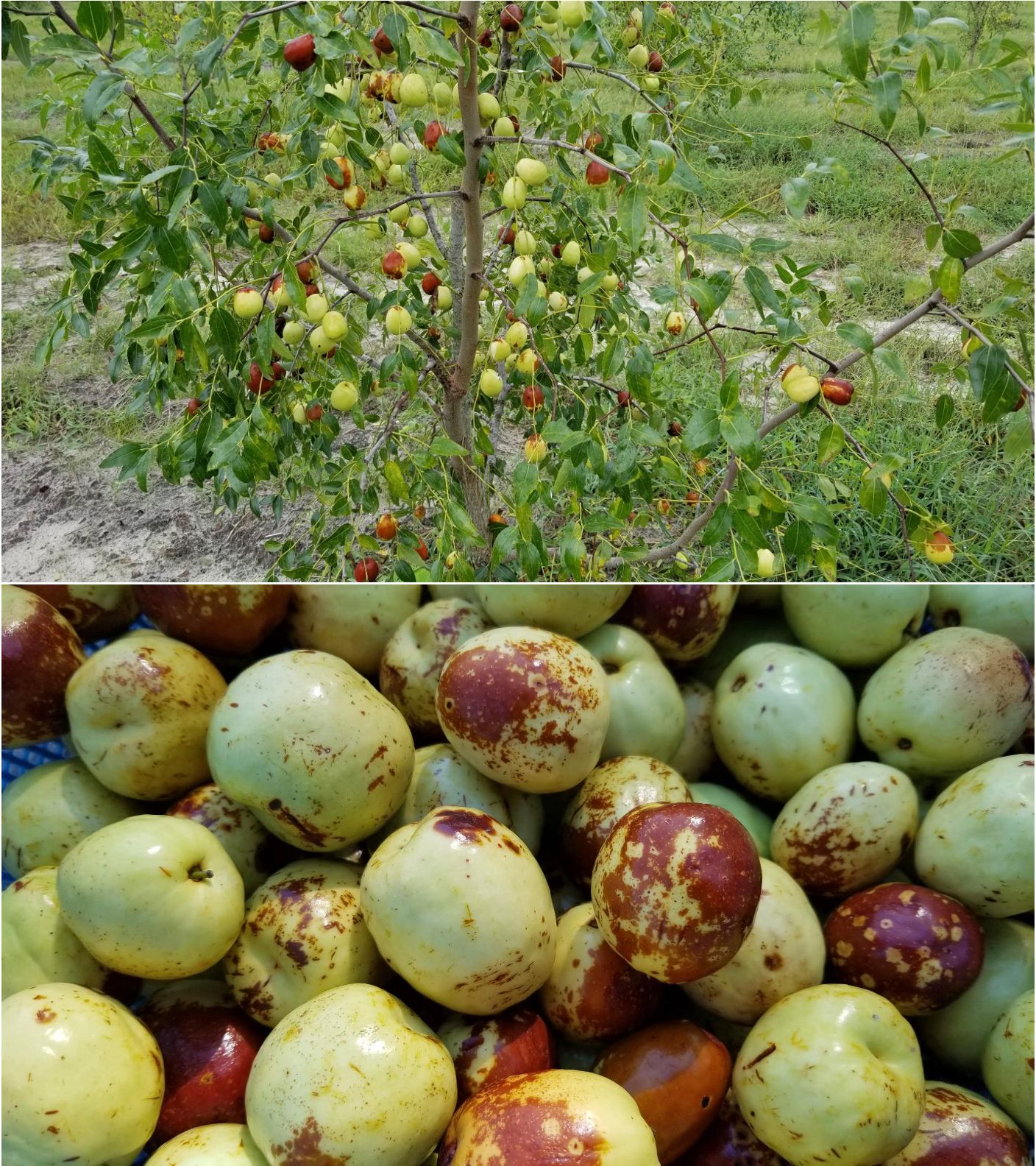
Credit: Ali Sarkhosh, UF/IFAS
Cultivation
Approximately 99% of all Chinese jujubes are grown in mainland China. In the United States, most jujube cultivation is confined to the desert southwest and California.
Jujube trees may grow to a height of 15–30 feet (5–10 meters), yet size may be constrained by pruning. Some growers choose two to six of the strongest basal trunks and allow them to continue to grow. Fruit are borne on thorny branches, with fewer thorns produced as the tree ages. Some newer selections are thornless. Jujube typically produces suckers, new trees that may emerge several feet from the parent tree. While oftentimes densely suckering, jujube is not considered invasive by the UF/IFAS Center for Aquatic and Invasive Plants.
A central leader (Figure 2) and open center (Figure 3 and Figure 4) are the most common training and pruning systems in conventional orchards. They are characterized by upright trunks, short, angled shoots, and rough bark that loses its leaves in the winter (Figure 4 and Figure 5). Jujube trees have naturally drooping and thorny branches that grow in zigzag patterns (Figure 6 and 7).
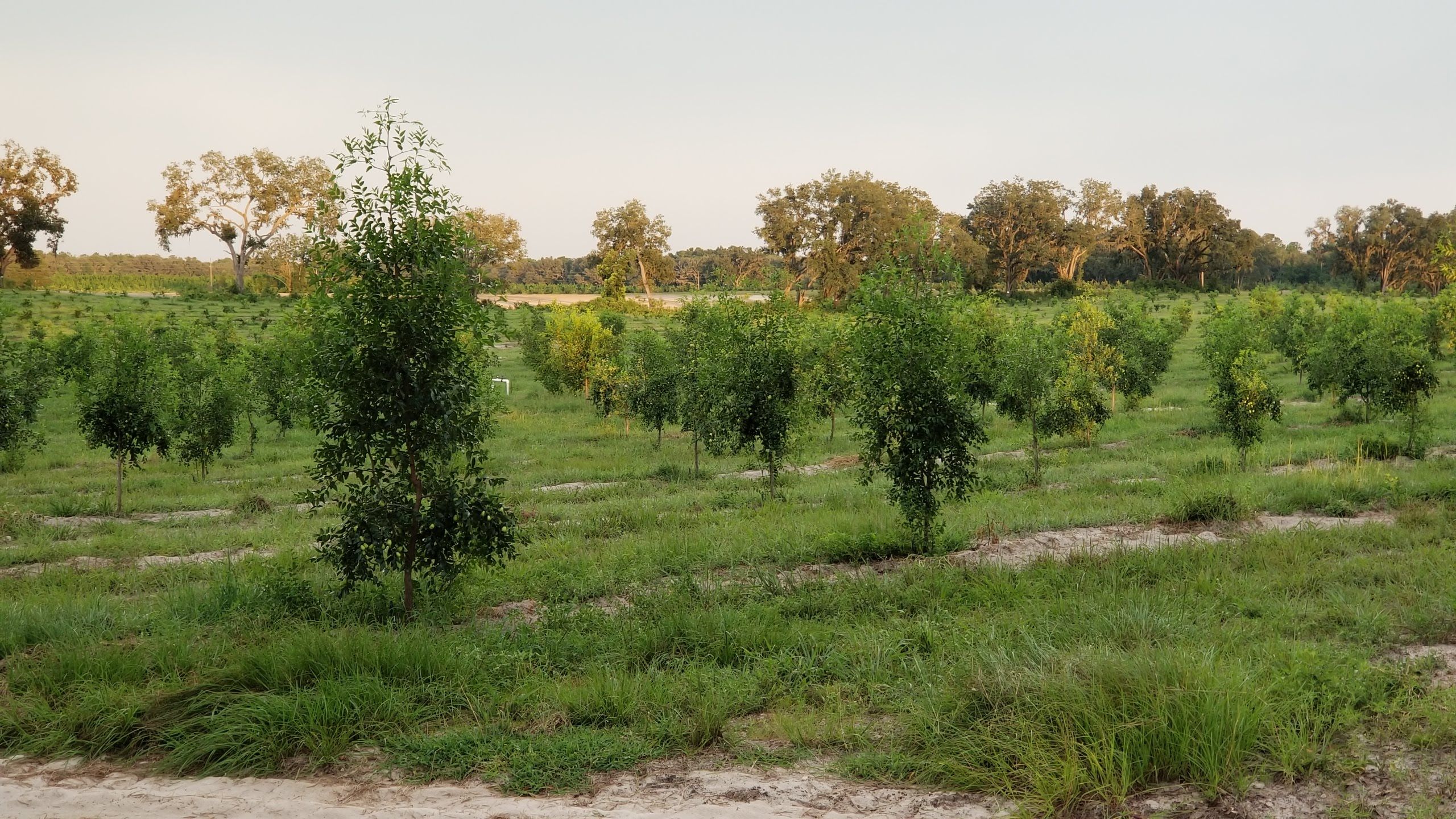
Credit: Ali Sarkhosh, UF/IFAS
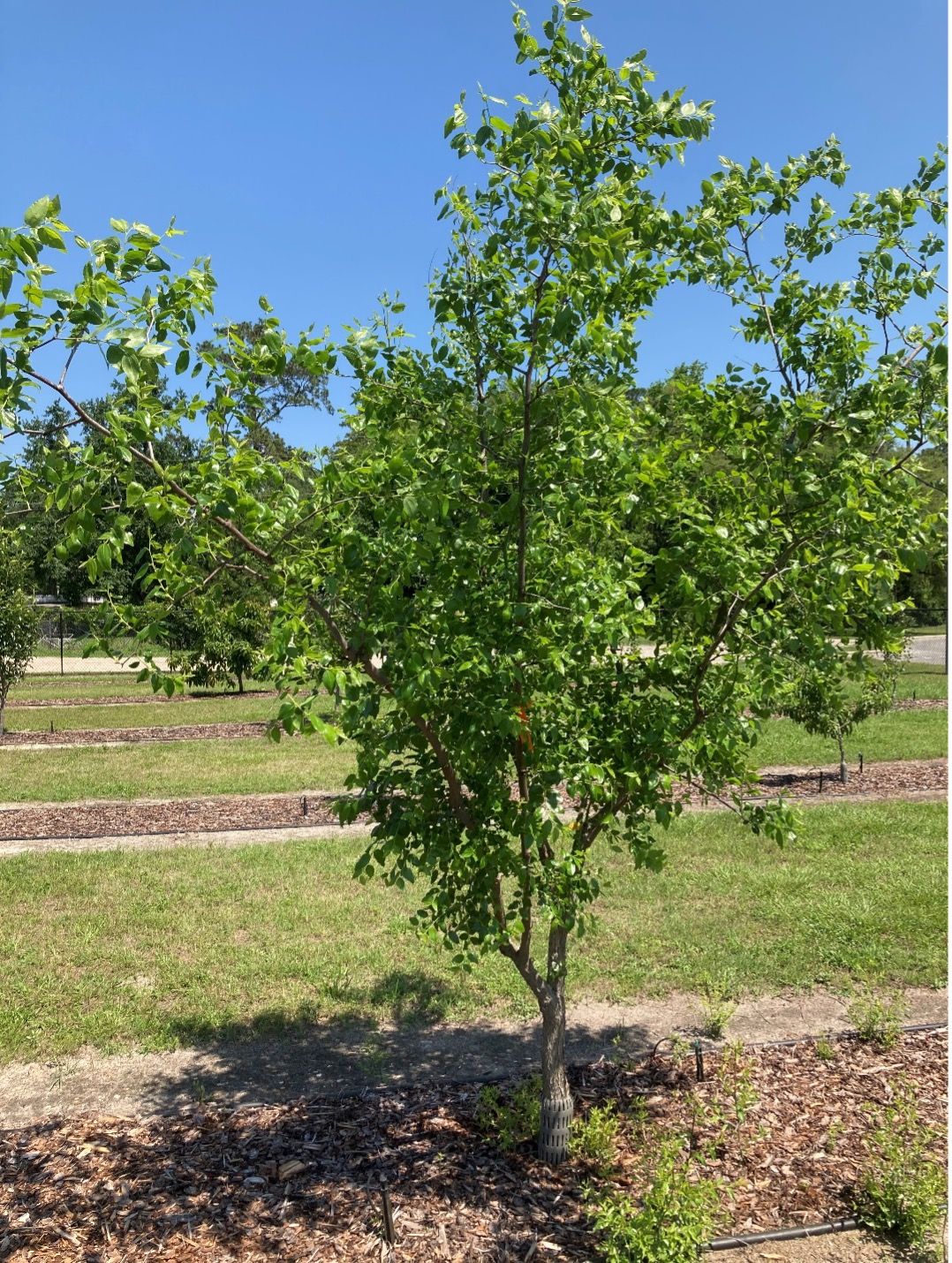
Credit: Dustin Huff, UF/IFAS
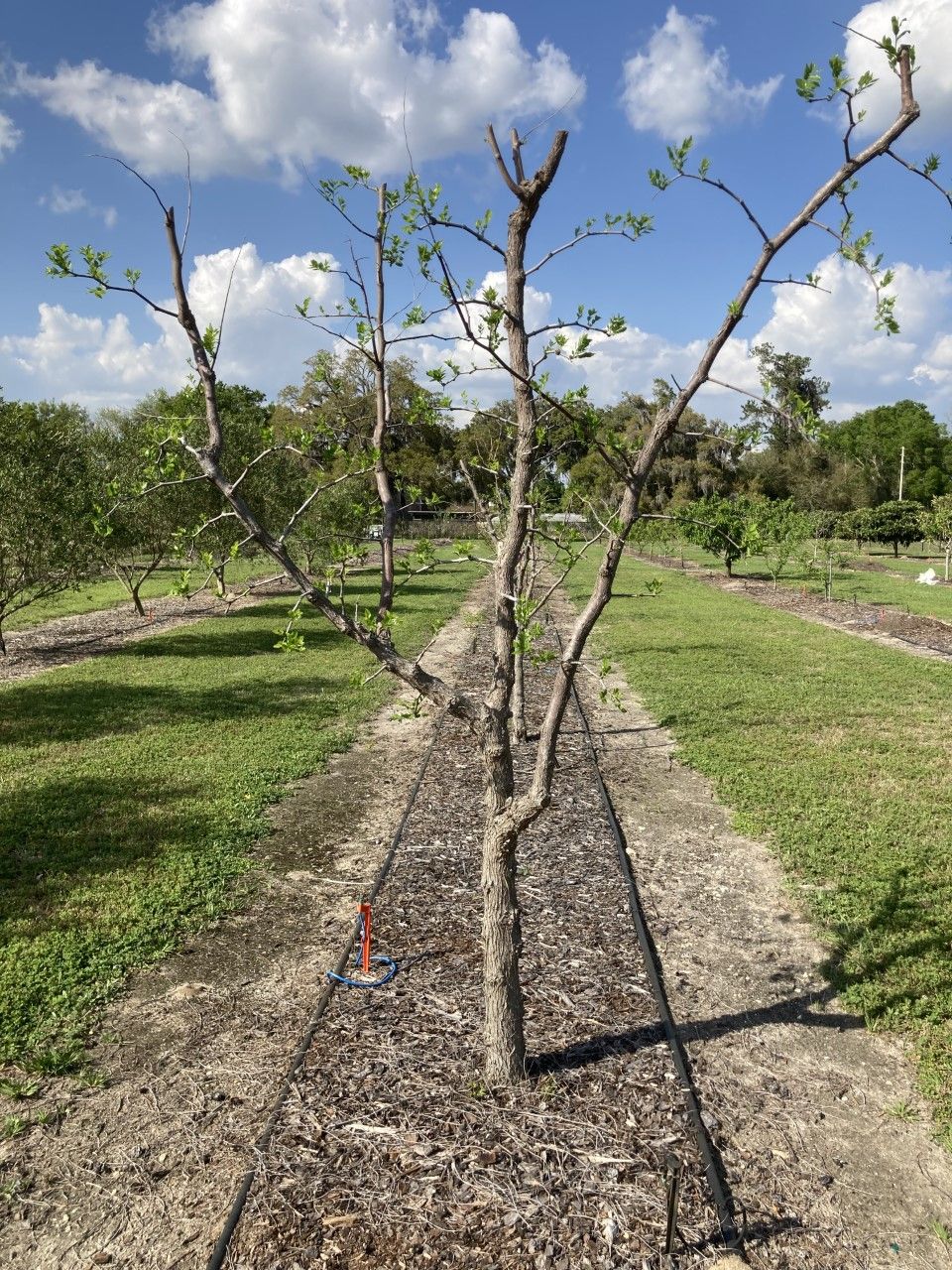
Credit: Dustin Huff, UF/IFAS

Credit: Dustin Huff, UF/IFAS
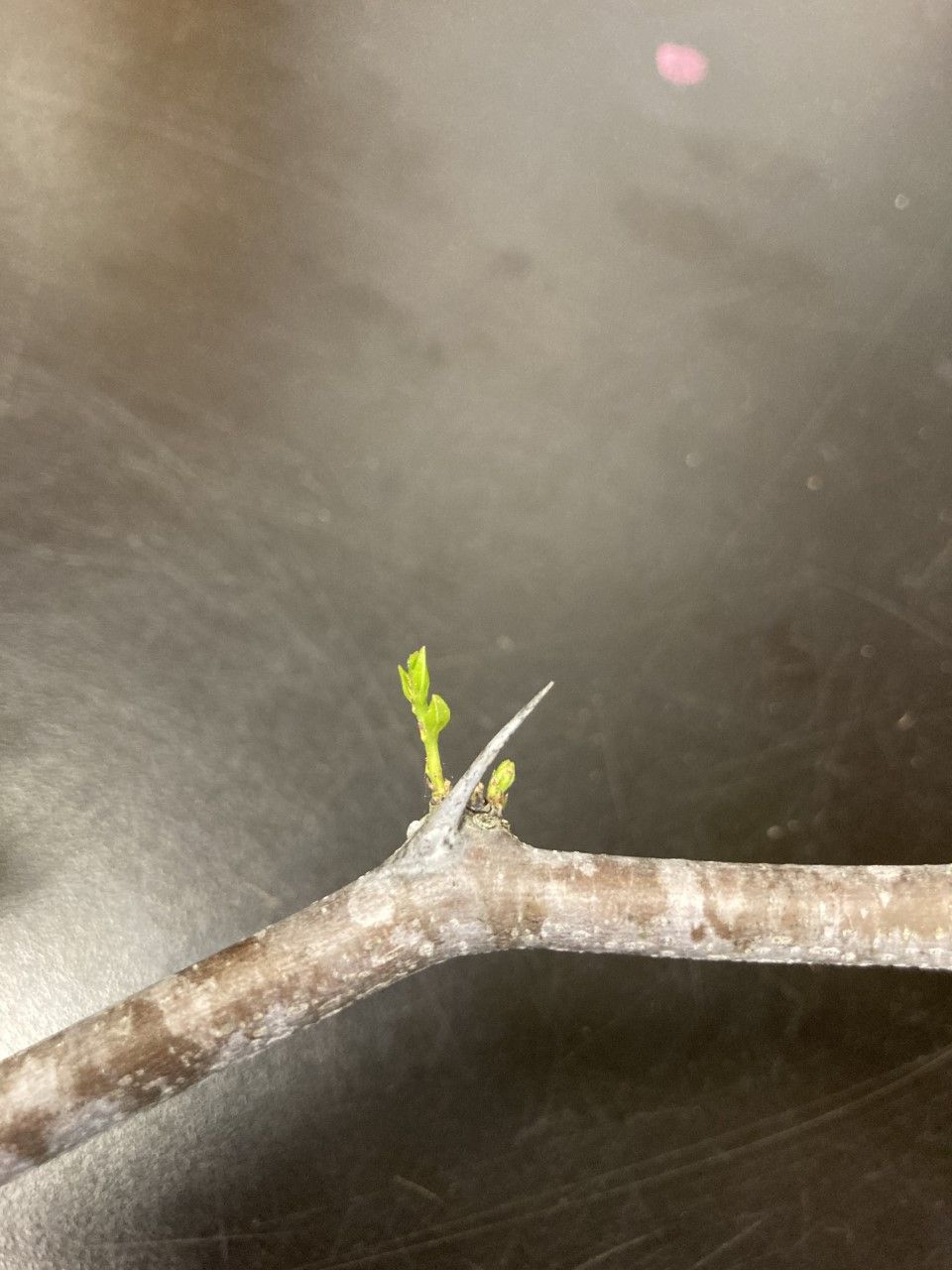
Credit: Dustin Huff, UF/IFAS
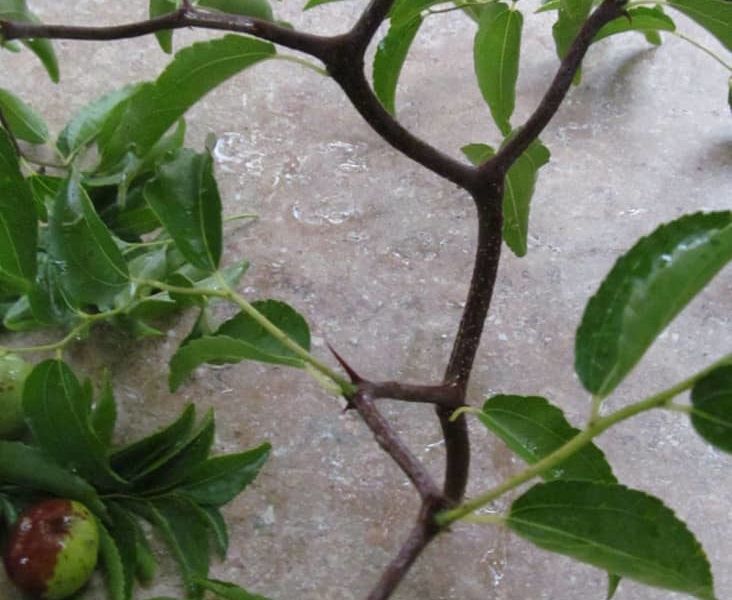
Credit: Just Fruits and Exotics Nursery (https://justfruitsandexotics.com/); and Dustin Huff, UF/IFAS
Propagation
Jujube varieties are propagated by grafting dormant scions (Figure 8) to rootstocks derived from seed or to rooted suckers harvested from existing trees. It is well known that jujube trees produce many suckers from their lateral roots (Figure 9 and Figure 10). Suckers are commonly used for propagating jujubes. Propagation by seed requires stratification (cold treatment) in moist peat moss for 90–120 days at 40°F (4°C). Seeds will germinate without stratification but at a much lower rate. Some sources recommend scarifying (to weaken the surface of) seeds manually or with boiling water, followed by cooling for 24 hours prior to sowing. The use of a germination heating pad has been suggested to increase the germination rate.
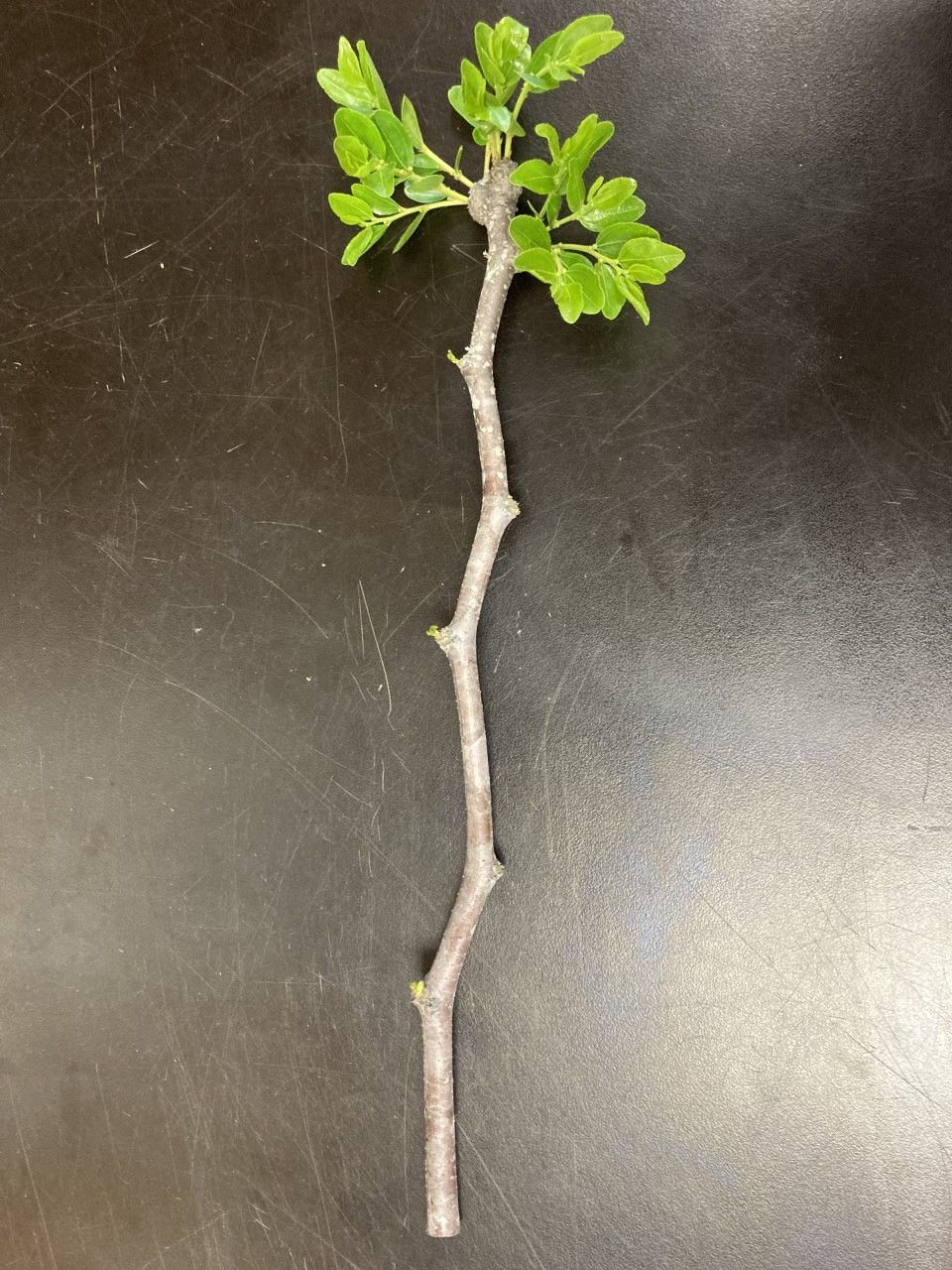
Credit: Dusitn Huff, UF/IFAS
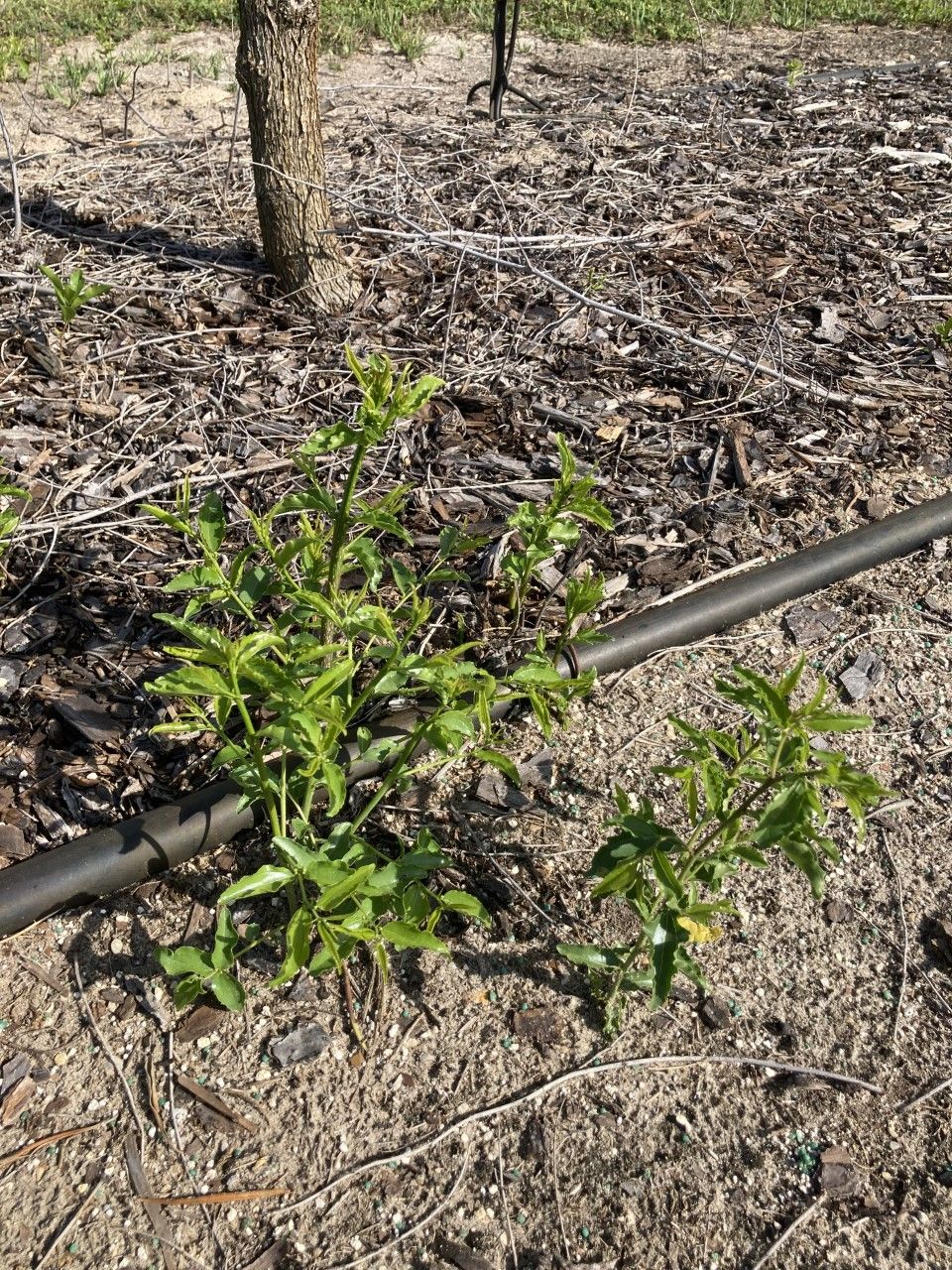
Credit: UF/IFAS
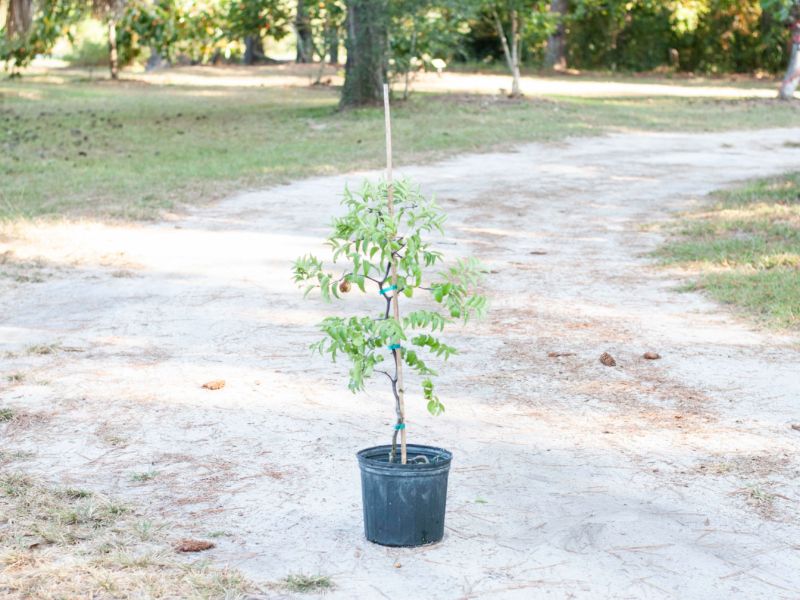
Credit: Just Fruits and Exotics Nursery (https://justfruitsandexotics.com/)
Growing Conditions
Jujube is recognized for its adaptability to a vast range of conditions. This species is highly tolerant to drought and salinity. It maintains multiple mechanisms to stave off desiccation, including a long tap root and other mechanisms to retain water. It tolerates a broad range of soil types and has been successfully grown in pH extremes from 4.5–8.4. Established trees are cold tolerant to -20°F (-29°C), yet they grow well in hot, humid conditions. Varieties have been reported to perform well in USDA zones 5–10 yet perform best in zones 6–9. It has been reported that jujube requires at least six hours of full sunlight a day to produce fruit. Jujube trees begin yielding three to five years after planting.
While these rules apply to jujube in general, fruit set has been reported to be problematic in Florida on some cultivars. The exact reason for this is unknown. While flowers and pollinators are abundant, few fruit form on many trees. It has been speculated to be due possibly to humidity, yet successful fruit set has been observed throughout humid regions of the United States, such as southeast Texas and Louisiana. The variation occurs differentially from year to year, so the cause may be attributable to the weather conditions during flowering.
Irrigation
Jujube is considered a drought tolerant tree. However, providing newly planted trees with adequate water is critical for establishment, especially in bare-root plantings, because transplanting shock can be quite a setback for young trees. Frequent irrigation (two to three times per week) is required after planting. The quantity of irrigation will be determined by several factors, including rainfall, soil type, and evapotranspiration levels. Microsprinklers and drip irrigation are effective means to supply water and can also be used for fertigation.
Fertilization
The fertilizer rates applied to jujubes have not been formally published. It is currently unknown what nutrient requirements and timing are specific to Florida. The use of proprietary NPK plus trace element fertilizers, such as 12.4.8 plus trace elements, provides a convenient approach to fertilizing. In general, they are formulated in ratios that are suitable for horticultural crops in most cases. The general guidance is to split the fertilization plan into three applications, with 50% applied in late dormancy (Feb/March) and 25% each in May/June and July/August. Magnesium deficiencies can occur if soil potassium or calcium levels are too high, and manganese and iron can be scarce in soils with a pH above 7. Heavy applications of quick-release nitrogen should be avoided because this can increase fruit drop. Monitoring for leaf nutrient levels is also a great way to fine tune a fertilizer program.
Flowering
The trees have been described as having a low chilling requirement (<400 hours) and perform well in protected cultivation. Moreover, they have a higher heat unit requirement to break dormancy, being one of the later fruit trees to leaf out in Florida. Jujube is a good choice for areas of the state prone to late spring freezes. Flowering begins in early March from central Florida and can continue to late April in northern Florida, with the later flowers being more productive.
Jujube types may be characterized by the time of day that they flower (Figure 11 and Figure 12), which falls into one of two types. One type is open between 7 a.m. and 10 a.m., the other between 2 p.m. and 5 p.m., and flowering time is acutely affected by weather, especially ambient temperature. There are several reports that detail self-incompatibility in jujube varieties, indicating that several compatible trees must be planted to successfully produce fruit. Pollen is produced approximately 12 hours before the stigma is receptive to pollination, and successful fruit set has been observed between flowering-time types (Figure 13). The exceptions are the parthenocarpic varieties (‘Silverhill’ or ‘Tigertooth’, which are likely the same variety; ‘Swoboda’ or ‘Leon Burk’), which are reliable producers albeit with few viable seeds.
Flowering occurs on fruiting spurs which give rise to a cyme inflorescence bearing numerous, small yellow perfect flowers (5–9 millimeters; Figure 12). Biennial bearing has not been described in jujube.
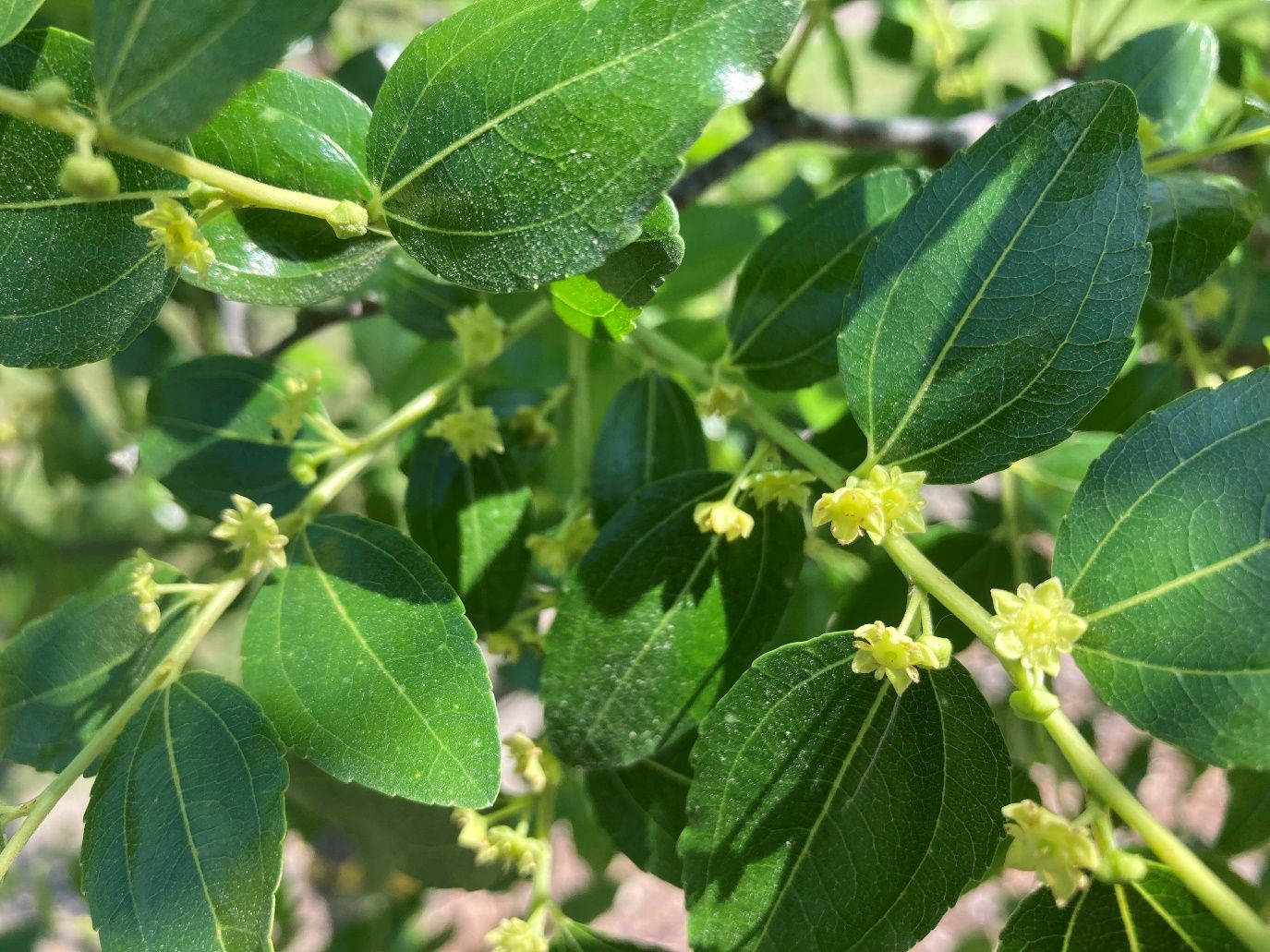
Credit: Dustin Huff, UF/IFAS
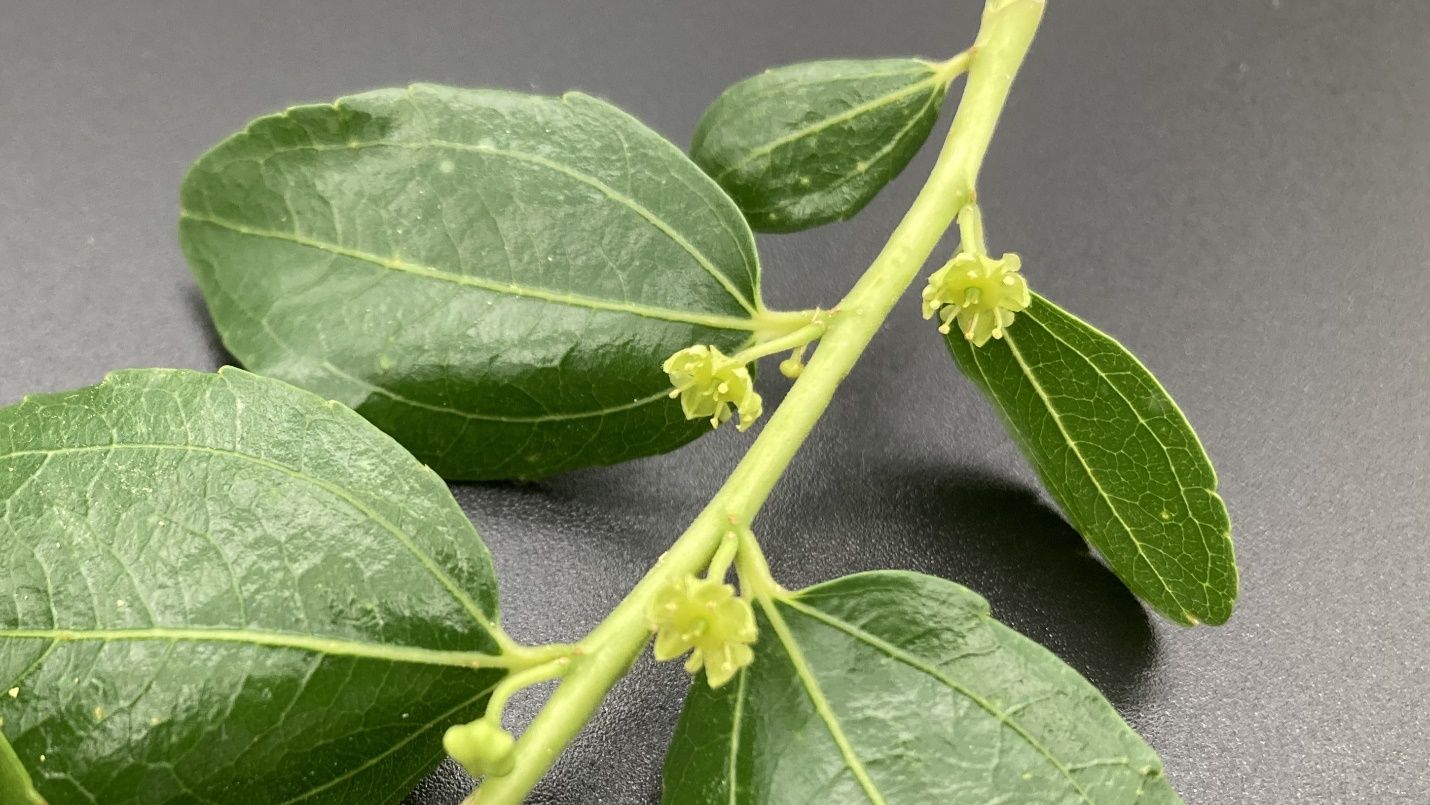
Credit: Dustin Huff, UF/IFAS
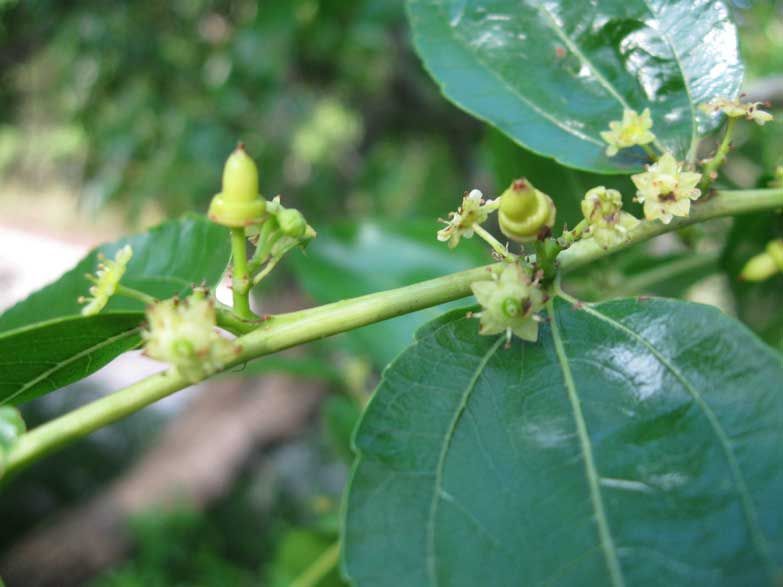
Credit: Just Fruits and Exotics Nursery (https://justfruitsandexotics.com/)
Fruit Quality
Fruits are borne on new growth (Figure 14) and expand through the summer months, typically ripening in August and September in Florida. The fruit is a drupe, containing a pit, with one or two seeds. Fruit size varies greatly among varieties, with ‘Tigertooth’ being ovate and 1–1.5 inches (2–3 centimeters) in length, to ‘Thai Giant’ being the size of an extra-large chicken egg. In most varieties, ripening is noted as a change in color from green to brown, yet fruits (peel and pulp) may be consumed fresh from the green to brown stage or dried. Different varieties are more amenable to drying.
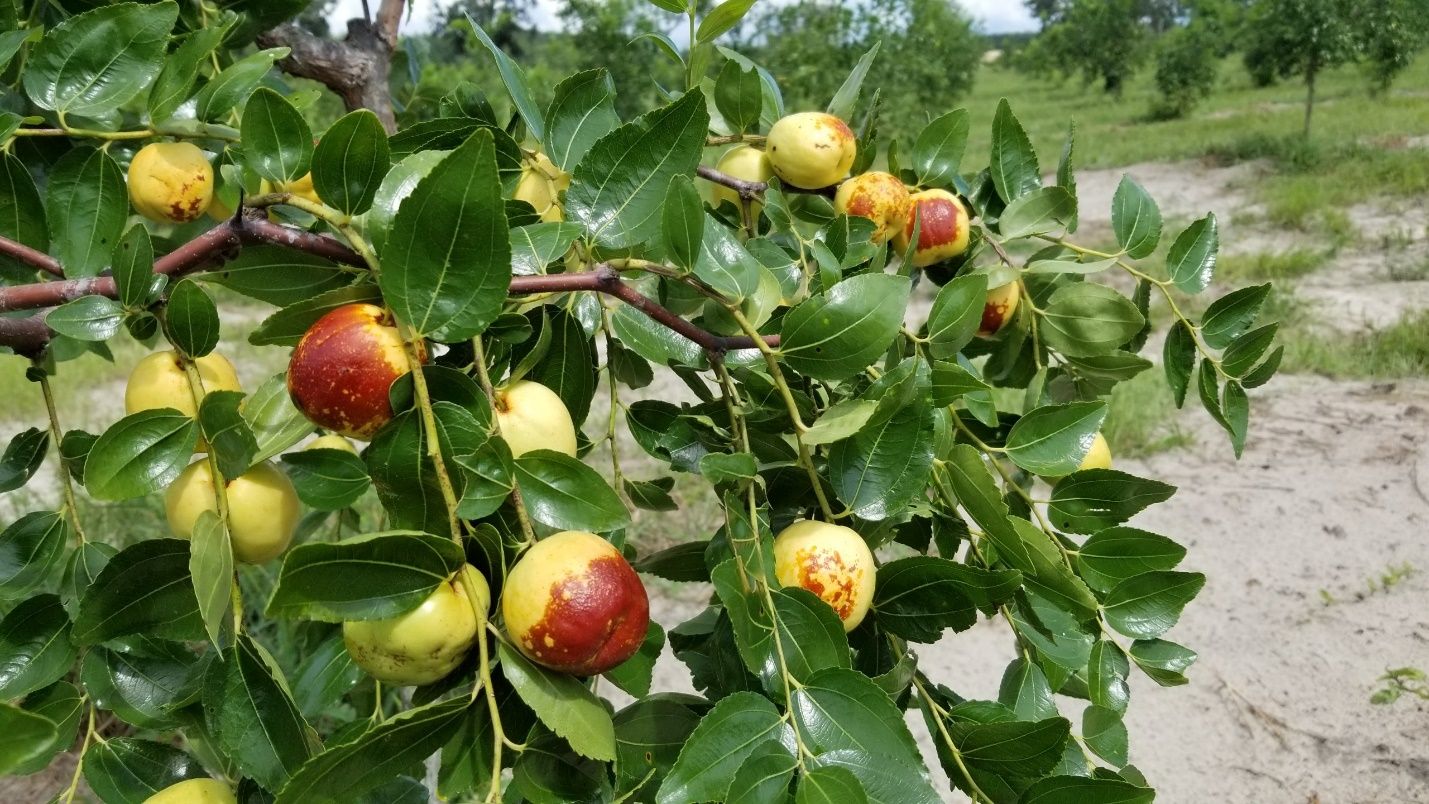
Credit: Ali Sarkhosh, UF/IFAS
The fresh jujube fruit is generally crisp like an apple, with similar texture, but generally not as juicy (Figure 15). The spongy flesh has a flavor reminiscent of apple or Asian pear with sweetness and a tangy aftertaste. The flavor and less-foamy texture improve as the tree ages. The sweetness varies significantly between genotypes (Table 1). Jujube flavor is significantly affected by environmental conditions and management practices, as fruit from any given cultivar have been described from “fruity and aromatic” to “crunchy and foamy” suggesting that genetics are necessary but not sufficient to produce a flavorful fruit.
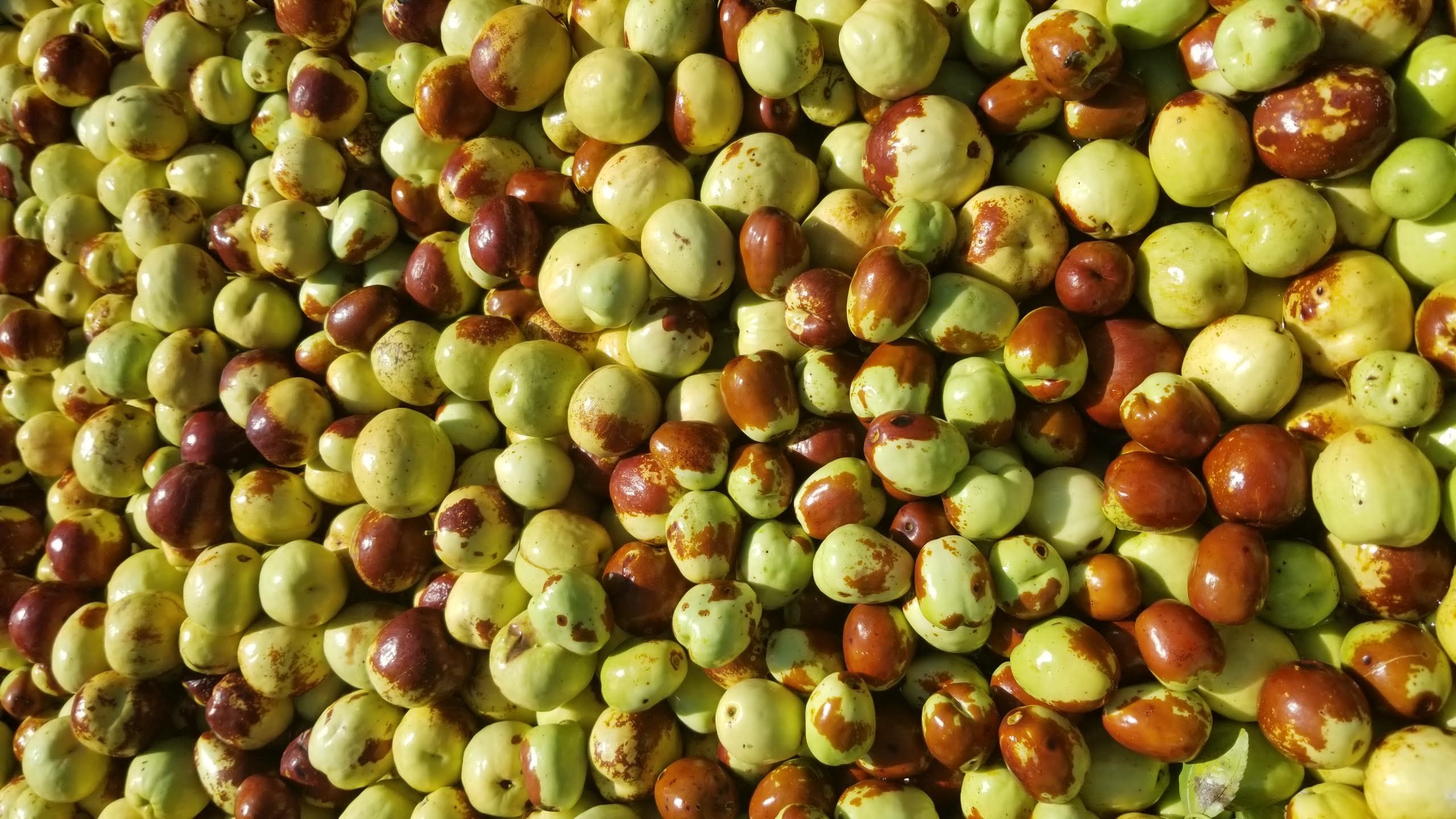
Credit: Ali Sarkhosh, UF/IFAS
Jujubes may be dried, with some varieties being more amenable to dehydration than others. Dried fruit have a chewy consistency, with enhanced sweetness. Dried fruit (Figure 15) store well at room temperature and can be stored for several years at 40°F (4°C). Fresh fruit may be stored for several months in sealed containers at 40°F. The fruits are rich in vitamin C, potassium, iron, and zinc, among the highest levels found in fruits.
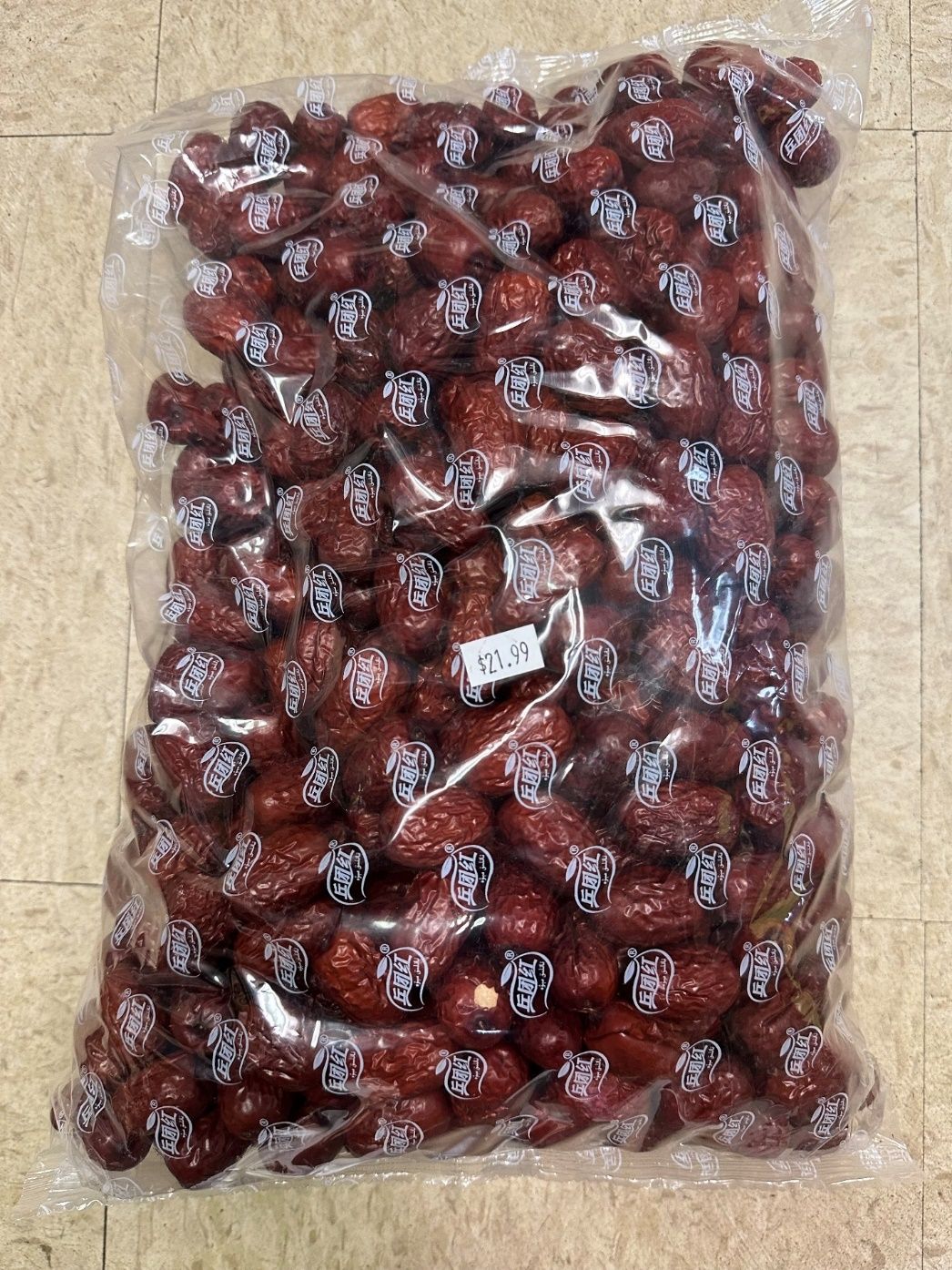
Credit: Ali Sarkhosh, UF/IFAS
Diseases and Pests
Disease has been noted as one of the primary limitations of jujube cultivation in China. Jujube is susceptible to several phytoplasmas that cause significant economic loss, namely “witch’s broom disease.” There are also multiple fungal and bacterial species that cause leaf rust, as well as numerous postharvest diseases.
Jujube pests have not been described in Florida specifically. Fruit may be damaged from birds or stinkbugs. Tree damage from insects or nematodes has not been reported. In the desert southwest United States, deer, gopher, and prairie dog issues have been observed, so protection of the main trunk may be advisable to protect from these animals as well as rabbits.
Cultivars
In China, there are 700–800 jujube varieties, specifically bred for drying or fresh consumption. Cultivars in the United States have expanded to the readily available genotypes on the following Table 1.
Table 1. Jujube cultivars and some fruit characterizations.

Credit: Just Fruits and Exotics Nursery (https://justfruitsandexotics.com/)
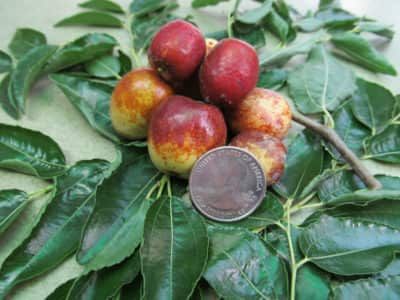
Credit: Just Fruits and Exotics Nursery (https://justfruitsandexotics.com/)

Credit: Just Fruits and Exotics Nursery (https://justfruitsandexotics.com/)

Credit: Just Fruits and Exotics Nursery (https://justfruitsandexotics.com/)
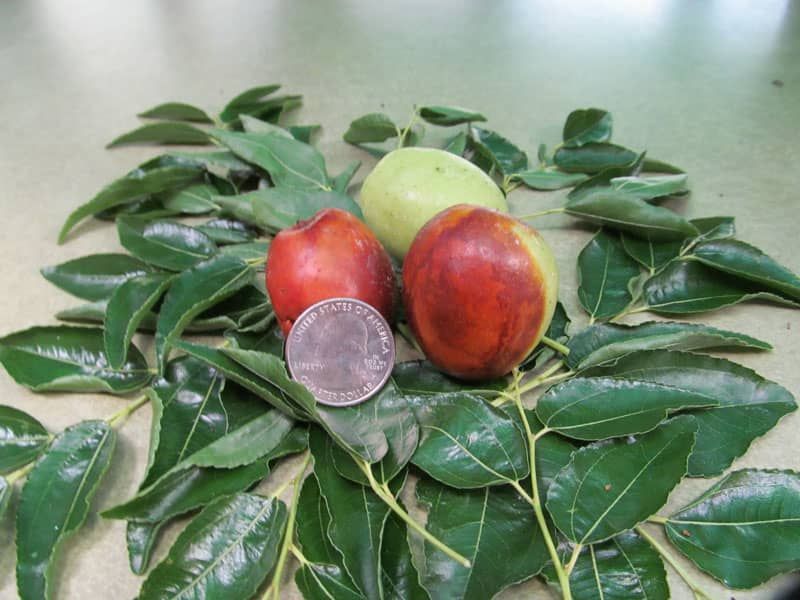
Credit: Just Fruits and Exotics Nursery (https://justfruitsandexotics.com/)
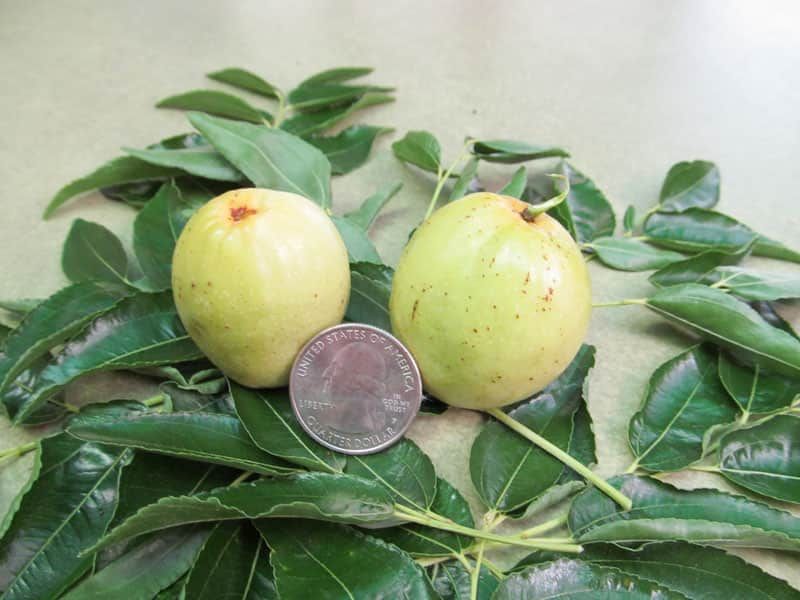
Credit: Just Fruits and Exotics Nursery (https://justfruitsandexotics.com/)
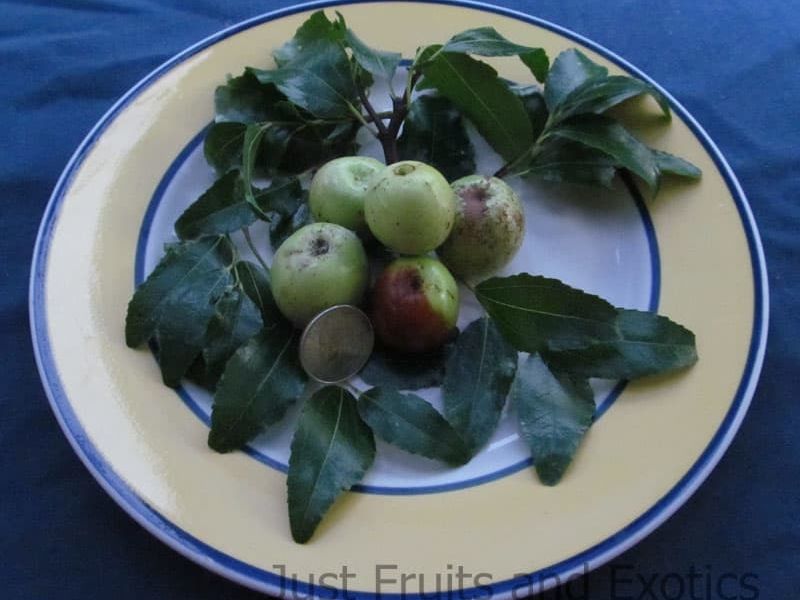
Credit: Just Fruits and Exotics Nursery (https://justfruitsandexotics.com/)
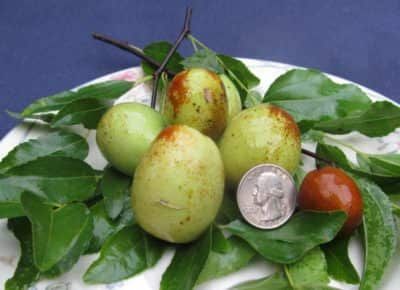
Credit: Just Fruits and Exotics Nursery (https://justfruitsandexotics.com/)

Credit: Just Fruits and Exotics Nursery (https://justfruitsandexotics.com/)
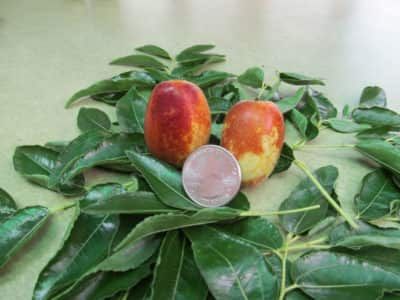
Credit: Just Fruits and Exotics Nursery (https://justfruitsandexotics.com/)
Genetic Improvement
The vast majority of germplasm improvement is happening in China, with sporadic breeding programs worldwide, including a program for genetic improvement at the University of New Mexico (United States). Over 930 cultivated varieties are said to exist in China. The central priority is introgression of disease resistance from wild accessions (i.e., introducing genes from disease resistant cultivars into less resistant types). Documentation of most breeding in China remains unpublished.
One of the challenges to jujube breeding is that flowers are extremely small, approximately 1/4–3/8 inch (5–7 millimeters) in diameter. While flowers are perfect, the small size makes emasculation (removal of pollen-producing parts) difficult, making it challenging to control pollination with any specific pollen variety. While flowers are abundant, fruit set is low in jujube, at about 1% of flowers producing fruit. Little is known about self-incompatibility and male sterility, complicating breeding efforts. Gametophytic self-incompatibility has been reported, with some varieties maintaining an S-RNase based incompatibility system. Hybrid seeds are extremely difficult to obtain from directed crosses. Some efforts have grafted varieties to be crossed onto a single tree and then tented the tree in the presence of bees. Successful crosses were identified using molecular tools. Other varieties have been described as self-fruitful.
Conclusion
The jujube has some potential as a fresh or processed fruit in Florida. Its low chilling requirement, tolerance to disease, pests, and weather extremes make it an attractive candidate for targeted genetic improvement. Consumer acceptance is the central hurdle, as most are unfamiliar with the jujube, and those who are aware of this crop have not been impressed by the prematurely harvested, bland fruits that are sold in specialty markets. Small farm and dooryard production may be a promising gateway to broader jujube acceptance, coupled with importation of more varieties from China, conducting Florida trials with new cultivars from various breeding programs, and formal evaluation of varieties across Florida’s varied soils and climate.
Acknowledgement
The authors thank Just Fruits & Exotics, Crawfordville, Florida, for permission to include selected images for this publication.
Additional Reading
Abdoul-Azize, S. 2016. “Potential Benefits of Jujube (Zizyphus lotus L.) Bioactive Compounds for Nutrition and Health.” Journal of Nutrition and Metabolism 2016: 2867470. https://doi.org/10.1155/2016/2867470
San, B., A. N. Yildirim, M. Polat, and F. Yildirim. 2009. “Mineral Composition of Leaves and Fruits of Some Promising Jujube (Zizyphus jujube MiIlar) Genotypes.” Asian Journal of Chemistry 21 (4): 2898–2902.
Aston, R. 2006. Jujube, The Chinese Date. Tempe, Arizona: Third Millenium Publishing. Available from, http://www.3mpub.com/ashton/title3.html.
Azum-Ali, S., E. Bonkoungou, C. Bowe, C. deKock, A. Godara, and J. T. Williams. 2006. “Ber and Other Jujubes.” In Fruits for the Future 2 (Revised Edition), edited by J. T. Williams, R. W. Smith, N. Haq, and Z. Dunsiger. University of Southampton: International Centre for Underutilised Crops.
Hartmann, H. T., D. E. Kester, and F. T. Davies Jr. 1990. Plant Propagation: Principles and Practices. Fifth Edition. Englewood Cliffs, New Jersey: Prentice-Hall Inc.
Hasan, N. M., M. A. Al Sorkhy, and F. F. Al Battah. 2014. “Ziziphus jujube (ennab) of the Middle East, Food and Medicine.” Unique Journal of Ayurvedic and Herbal Medicines 2 (6): 7–11.
He, R. P., J. Li, F. Zhao, W. N. Kong, and R. S. Niu. 2009. “Study on Fruit Quality of Jujube Varieties during Maturity.” ISHS Acta Horticulturae 840: 553–556. https://doi.org/10.17660/ActaHortic.2009.840.79
Li, J. -W., L. -P. Fan, S. -D. Ding, and X. -L. Ding. 2007. “Nutritional Composition of Five Cultivars of Chinese Jujube.” Food Chemistry 103 (2): 454–460. https://doi.org/10.1016/j.foodchem.2006.08.016
Liu, D., X. Ye, and Y. Jiang, eds. 2016. Chinese Dates: A Traditional Functional Food. Boca Raton: CRC Press. https://doi.org/10.4324/9780429160509
Liu, M., and N. Wang, eds. 2009. Germplasm Resources of Chinese Jujube. Beijing, China: China Forestry Publishing House.
Liu, M. 2006. “Chinese Jujube: Botany and Horticulture.” In Horticultural Reviews, edited by J. Janick. Vol. 32. Oxford, UK: John Wiley & Sons, Inc. https://doi.org/10.1002/9780470767986.ch5
Sheng, J., L. Yunbo, and L. Shen. 2003. “Storage of Chinese Winter Jujube Fruit.” ISHS Acta Horticulturae 620: 203–208. https://doi.org/10.17660/ActaHortic.2003.620.23
Song, L., L. W. Meinhardt, B. Bailey, and D. Zhang. 2019. “Genetic Improvement of Chinese Jujube for Disease Resistances: Status, Knowledge Gaps and Research Needs.” Crop Breeding, Genetics and Genomics 1: e190015. https://doi.org/10.20900/cbgg20190015
Sunil, P. 2013. “Nutritional Composition of Jujube Fruit.” Emirates Journal of Food and Agriculture 25 (6): 463–470. https://doi.org/10.9755/ejfa.v25i6.15552
Wang, Z., N. Li, and L. Quan. 2014. “Effects of Water Fertilizer Coupling on the Yield and Quality of Drip Irrigated Chinese Jujube in an Extreme Arid Region.” Advance Journal of Food Science and Technology 5: 634–637. https://doi.org/10.19026/ajfst.6.87
Yan, G., and A. R. Ferguson. 1993. “The Chinese Date or Chinese Jujube.” Horticulture in New Zealand 4 (2): 13–18.
Yao, S. 2014. “Jujube (Ziziphus jujuba) Grafting.” H-335. Las Cruces: New Mexico State University Cooperative Extension Service. Available from, http://aces.nmsu.edu/pubs/_h/H335/welcome.html
Zhang, H., L. Jiang, S. Ye, Y. Ye, and F. Ren. 2010. “Systematic Evaluation of Antioxidant Capacities of the Ethanolic Extract of Different Tissues of Jujube (Ziziphus jujuba Mill.) from China.” Food and Chemical Toxicology 48 (6): 1461–1465. https://doi.org/10.1016/j.fct.2010.03.011
Zhu, X. J. 2008. “Research Progress of Influencing Factors and Fresh-keeping Technique of ‘Dongzao’ Jujube Storage.” Journal of Anhui Agricultural Sciences 2008 (14): 5864–5865.